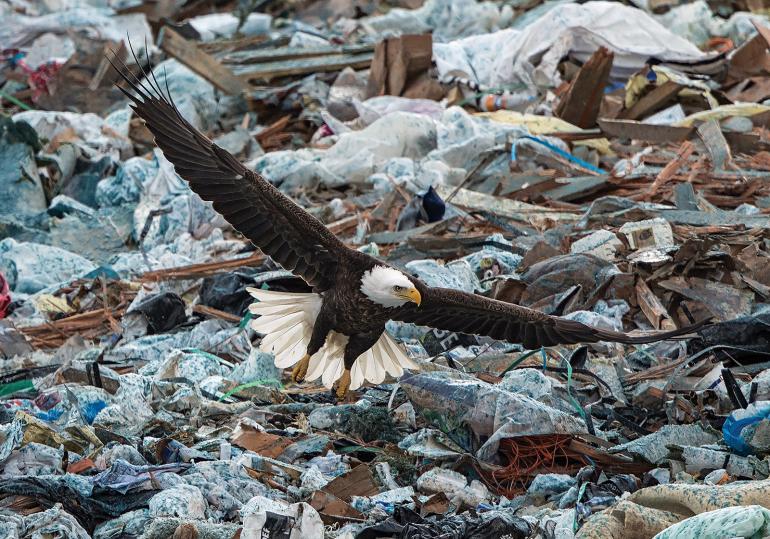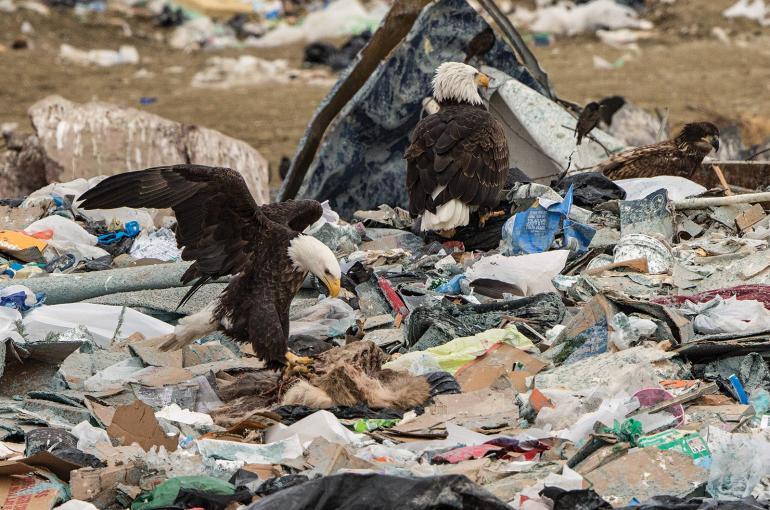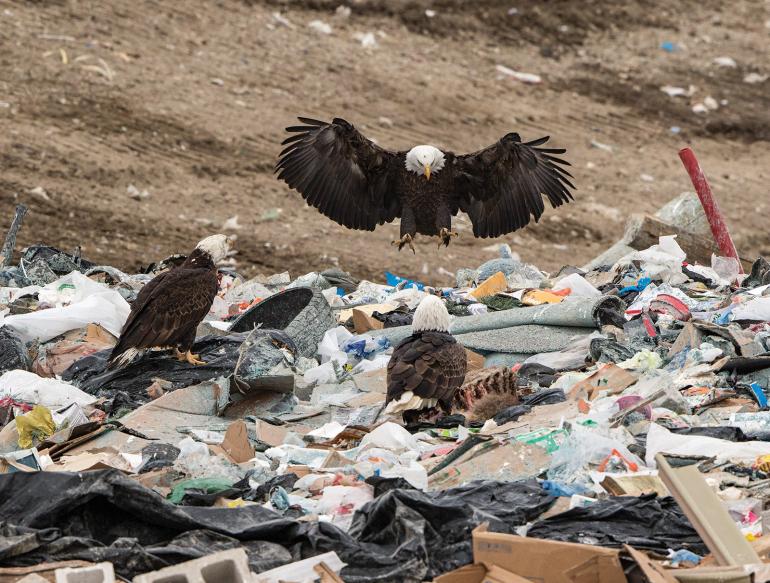Dumpster Divers
Eagles flock to the Logan Landfill.
As I entered the Logan Landfill, my adrenaline spiked when I espied a large number of bald eagles spiraling above the trash. Getting an “okay” to photograph from the pleasant women at the gate, I positioned my car near the operating trash site. During the winter months, the open fields in the surrounding environment are without ground squirrels, mice, and other raptor edibles. The trash site has replaced the eagles’ (and other birds’) diet with a smorgasbord of fine hors d’oeuvres: rubber plungers, cardboard, leather gloves, Cheetos, and of course, an abundance of plastic.
Squabbling eagles are in constant contention over finding a hearty, meaty meal when pickings are slim amongst the trash. The rubbish brings in eagles of all ages with wings flapping and talons spread wide. Territorialism is especially present when the exposed ribcage and skin of an animal is discovered. A tire is used as a perch, eagles congregate atop rolled carpet. I asked the management about exposed carcasses. FWP wants the landfill workers to cover and bury them within the day. The sharp-eyed birds are on a limited lunchtime period.
Landfills are a consequence of urbanization, especially when the site is expanding into surrounding open fields. Who would have thought that our iconic raptors would be interested in such an area? It all started with just a few eagles six or seven years ago who were possible residents, or perhaps flying south from Canada. Now, droves of eagles constantly swoop into the colorful heap of refuse during the winter months. Opportunity is prevalent to all.
Patty Howard and Ray Harrison, the landfill’s outreach coordinator and operations manager, respectively, give in-depth tours to schools and the general public. Several waste-management concepts were explained, which I scrutinized with nonstop questions. Recycling is extensive, including products such as lithium-ion batteries, florescent lights, and refrigerators. Wooden pallets are crushed into a compost heap. The compost is used to build slopes and hills that become revegetated with grasses.
But I was interested in the litter that escapes the trash heap. Each night, a pulverized compost material that looks like rubberized papier-mâché is sprayed onto the garbage. There are no chemicals in it, simply protection against marauding scavengers and the wind. Possible fly-away litter is stopped by wind screens surrounding the loose trash. Eagles perch upon the screens to oversee landfill activity.
The operation is funded by user payments according to weight and composition of the refuse. Take a tour and you’ll return home with not only raptor photos, but a more astute knowledge of what happens to our waste.














